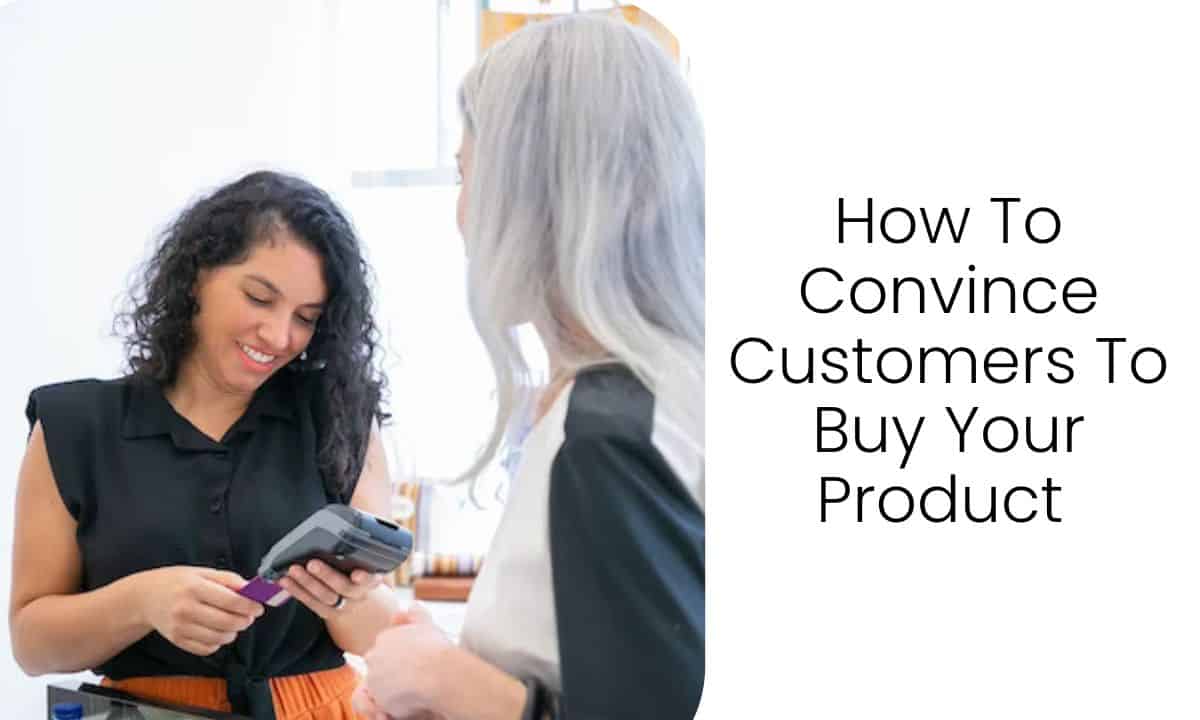

How to convince customers to buy your product?
Convincing customers to buy your product requires a well-planned and executed approach that focuses on building trust, understanding customer needs, highlighting unique selling points, and providing value. Here are some detailed steps to effectively convince customers to buy your product:
1. Understand your target audience: Start by identifying your target market and understanding their needs, preferences, and pain points. Conduct market research, analyze customer feedback, and create buyer personas to gain insights into their motivations and expectations.
2. Highlight the unique selling points (USPs): Identify the key features, benefits, or advantages that set your product apart from competitors. Clearly communicate these USPs to customers, emphasizing how your product solves their problems or fulfills their desires better than alternatives. Use persuasive language and storytelling techniques to engage customers emotionally.
Example: If you're selling a smartphone, focus on its exceptional camera quality, longer battery life, and user-friendly interface, highlighting how these features enhance the user experience compared to other smartphones in the market.
3. Provide social proof: People are more likely to trust a product when they see evidence of others using and benefiting from it. Incorporate social proof elements such as customer testimonials, case studies, reviews, ratings, or endorsements from industry experts or influencers. Displaying these on your website, social media platforms, or in marketing materials can help build credibility and trust.
Example: Online retailers often display customer reviews and ratings alongside product listings, allowing potential buyers to see what others think about the product before making a purchase decision.
4. Offer a guarantee or trial period: Customers may hesitate to buy a product if they are unsure about its quality or performance. Offering a money-back guarantee, free trial, or satisfaction guarantee can alleviate their concerns and encourage them to take the leap. This shows confidence in your product and reassures customers that they can trust your brand.
Example: Software companies often offer free trial periods, allowing potential customers to test the product's functionality and experience its benefits before committing to a purchase.
5. Provide exceptional customer service: Excellent customer service can significantly influence purchase decisions. Be responsive, helpful, and attentive to customer inquiries, concerns, or issues. Promptly address any problems and go the extra mile to ensure customer satisfaction. Positive interactions and support can create a positive impression and increase the likelihood of a purchase.
Example: Zappos, an online shoe and clothing retailer, is renowned for its exceptional customer service. They offer free shipping and returns, a 24/7 customer support hotline, and a generous return policy, all of which contribute to their reputation and customer loyalty.
6. Offer competitive pricing and promotions: Price is a crucial factor for many customers. Conduct market research to determine competitive pricing strategies. Consider offering discounts, bundle deals, loyalty programs, or limited-time promotions to create a sense of urgency and incentivize customers to buy.
Example: During holiday seasons, many retailers offer special discounts or "buy one, get one free" promotions to attract customers and boost sales.
7. Provide informative and engaging content: Create valuable and relevant content that educates and engages potential customers. This can be in the form of blog posts, videos, podcasts, or social media content. Use this content to address customer pain points, demonstrate your expertise, and showcase how your product can solve their problems or improve their lives.
Example: If you're selling skincare products, create blog posts or videos about skincare routines, common skin issues, and tips for maintaining healthy skin. By providing helpful information, you position yourself as an authority in the field and build trust with potential customers.
Remember, the key to convincing customers is to understand their needs, communicate the unique value of your product, build trust, and provide exceptional customer experiences. By implementing these strategies, you can increase the chances of customers choosing your product over competitors.
Related Posts
© 2025 Invastor. All Rights Reserved

User Comments
Penelope Humphries
a year ago
Discounts and promotions can be effective, but they should align with your brand image and not devalue your product.
Abigail Forster
a year ago
Pricing is important, but it's not just about being the cheapest. It's about showing the value your product provides even if it's priced slightly higher.
Violet Mellor
a year ago
What about pricing?
Ezra Carey
a year ago
Offering a clear and compelling value proposition is key. You need to show customers what makes your product unique and how it benefits them.
Mason Ingram
a year ago
Building a strong brand and reputation can make a big difference. Customers are more likely to buy from a company they trust.
Leo Summers
a year ago
So, what are some effective strategies for convincing customers?
Samuel Leonard
a year ago
Absolutely. It's important to communicate how your product solves a specific problem or fulfills a need that the customer has.
Owen Morales
a year ago
Convincing customers to buy your product can be quite a challenge. It's about understanding their needs and showing them the value of what you offer.